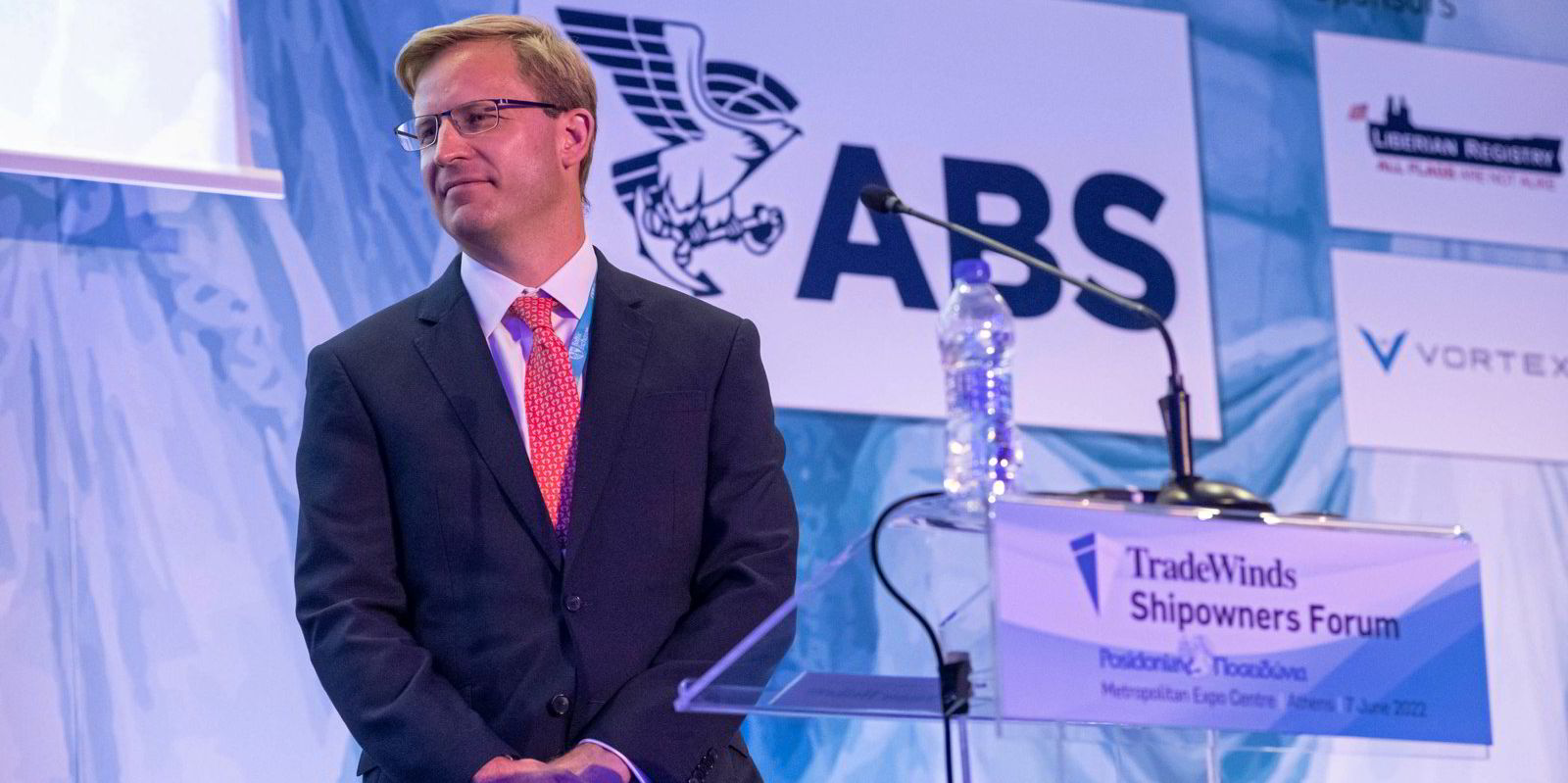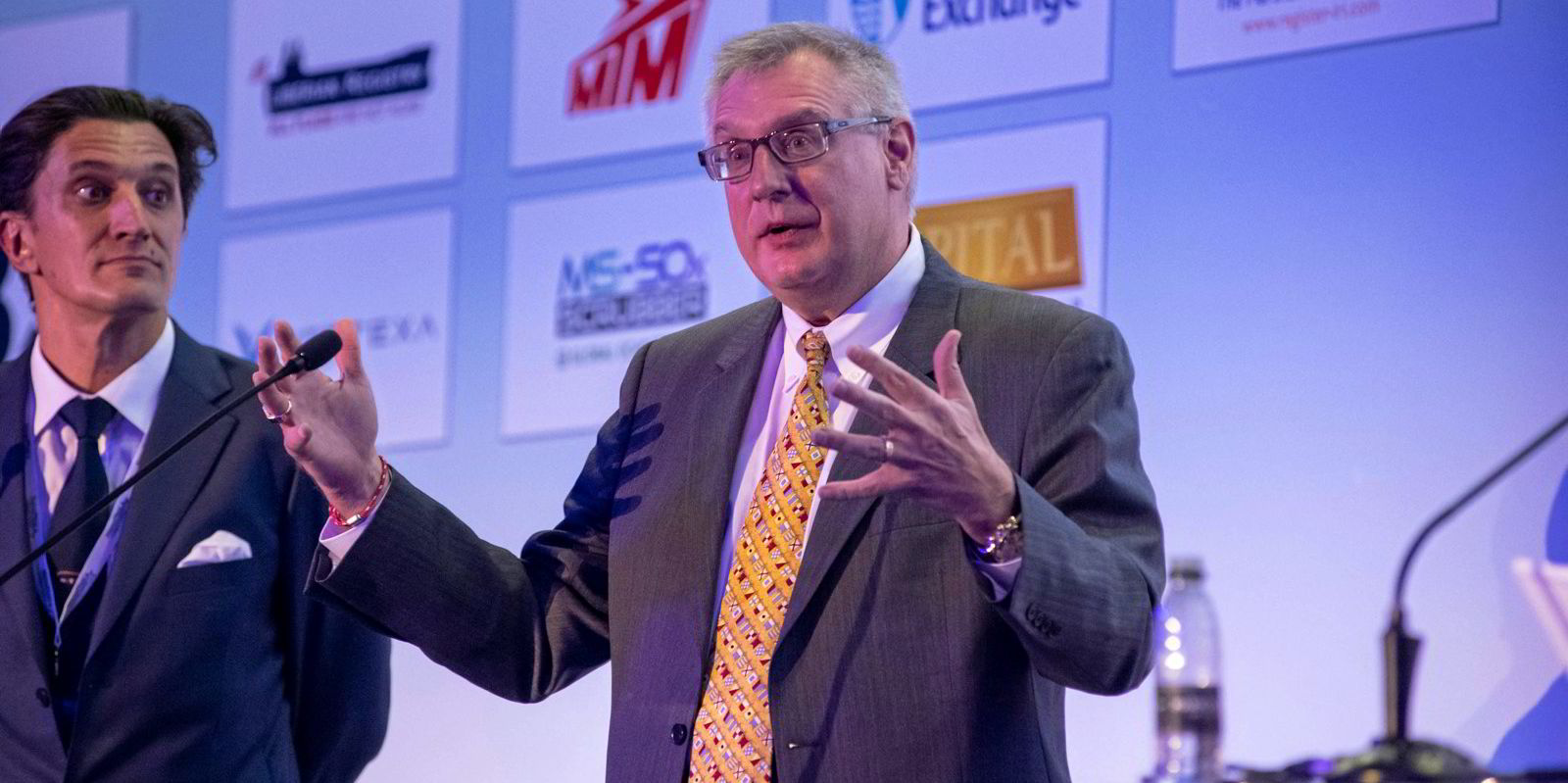As shipping reaches for a zero-carbon future, fuels that have hydrogen as their key ingredient are seen as a linchpin of decarbonisation.
But the hydrogen value chain that includes ammonia and methanol forms just one building block of a potential net-zero future.
Georgios Plevrakis, vice president of global sustainability at classification society ABS, said: “That value chain has another co-player. They co-exist. It takes two to tango. It’s the carbon value chain.”
Interest is growing in carbon-capture technology both as an enabler for shipping to tackle its carbon footprint and as an opportunity for the industry to profit from the greening of other industries, though the need to overcome cost challenges remains a key hurdle.
On the one hand, the need to decarbonise the well-to-wake emissions of shipping brings the technology to the fore as a way to deliver greener fuels to ships and to reduce emissions onboard vessels.
On the other hand, the expected growth of carbon capture, utilisation and storage (CCUS) as the wider industrial world moves towards tackling climate change is leading shipowners to eye a lucrative trade in CO2.
ABS sees the carbon value chain made possible by carbon capture and hydrogen as the two key pillars of tackling shipping’s greenhouse gas footprint.
Hydrogen plus carbon
In a recent report, the Houston-based classification society said all of the pathways to decarbonise shipping will require both low-carbon fuels and carbon-capture technologies at scale.

Ammonia is becoming a leading contender as a zero-carbon fuel for shipping. But while there is no carbon in the molecule that makes up the fuel, there is still much work to be done to provide the industry with green ammonia that is produced in a carbon-free way, such as using hydrogen made from renewable energy.
“Do we have green hydrogen ... produced by renewable energy sources, right now, in the volumes and the quantities that are required to cover the entire shipping industry? No. In fact, we have to scale these ... by a factor of seven to 10,” Plevrakis told TradeWinds.
Enter blue hydrogen, which is produced using carbon capture and can be made into ammonia. Until production of green fuels catches up to meet shipping’s needs, ABS believes carbon capture can serve as a pathway to rapidly scale up low-emission hydrogen production.
A growing number of shipping companies are looking at onboard carbon capture to reduce emissions from their vessels, though adoption is slow.
Jan Dieleman, president of bulker operating giant Cargill Ocean Transportation, said his company is looking at the technology.
He is convinced that it is technologically feasible, but it is not sure about onboard carbon capture’s commercial viability.
“I think the biggest challenge that we’re trying to understand is, what is the supply chain around taking it offboard ships, where does it go, and what is the carbon footprint of that?” he told TradeWinds. “And we haven’t figured that one out.”
But what has many shipping stakeholders excited is the role the industry can play as an enabler of that carbon value chain for the broader industrial universe.

ABS points to estimates that some 5bn tonnes, or 5 gigatonnes, of carbon will have to be captured by 2050 worldwide, up from 50m tonnes in 2020.
Plevrakis said shipping will be important for the growing market in carbon capture, utilisation and storage (CCUS) in part because a big chunk of the sequestration business will take place offshore and utilisation will open trade in carbon as a commodity.
“Increasing usage will actually take that activity from a niche market, a market that supports just the transportation to the sequestration point, to a utilisation activity, which will actually create that commodity view of carbon,” he said.
That opportunity has shipowners looking at liquefied vessels to transport all that carbon. As TradeWinds has reported, Peter Livanos-backed EcoLog has plans for a fleet of 60 CO2 carriers and a network of terminals.
EcoLog chief commercial officer Jasper Heikens told the TradeWinds Shipowners Forum in June that the focus on energy security that followed Russia’s invasion of Ukraine has led utilities that had been looking at cleaner fuels to become interested in carbon capture and storage (CCS) to keep the fires burning.
“Now we do see that CCS is creating a viable solution and a more immediate solution for emitters,” he said.





